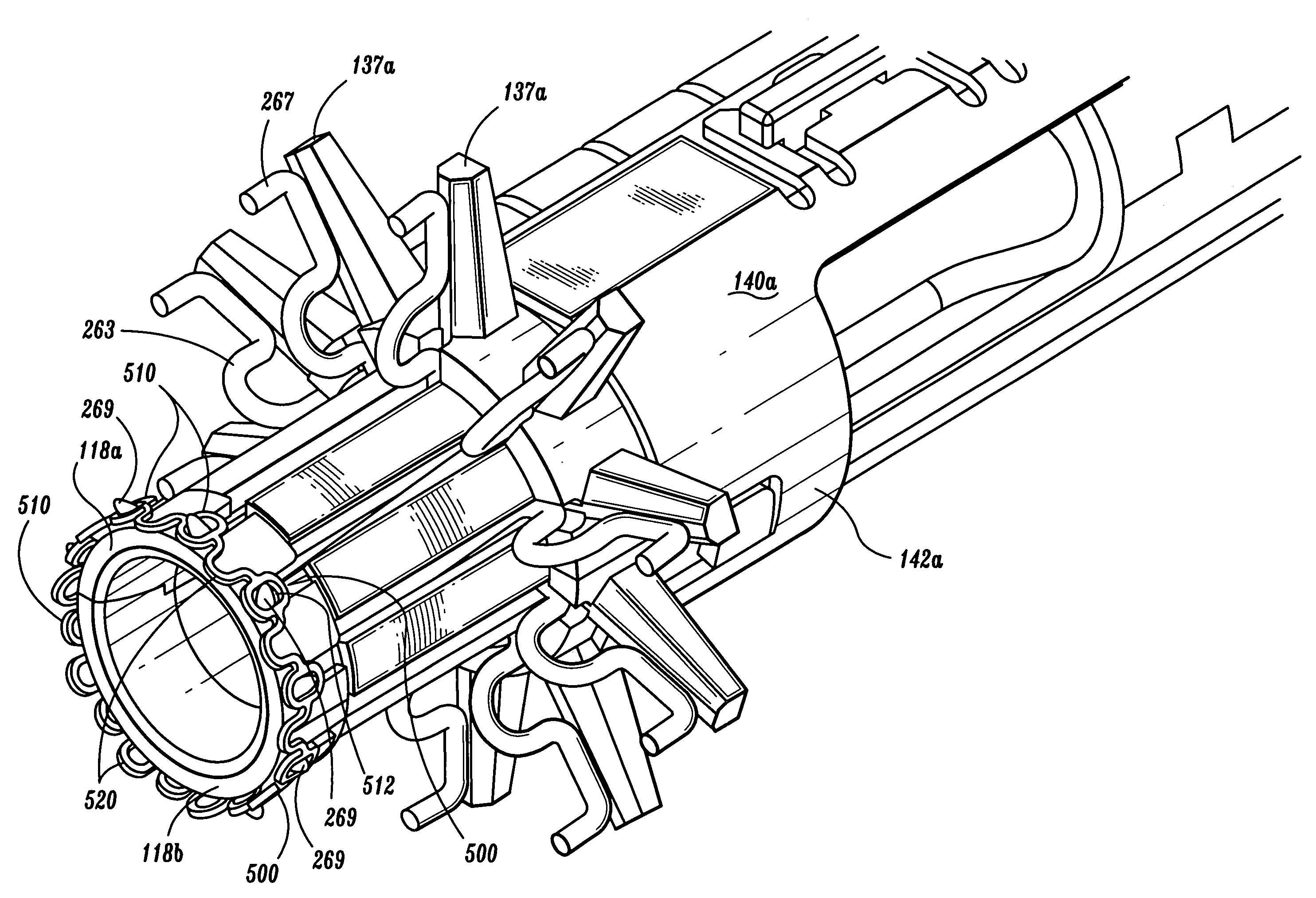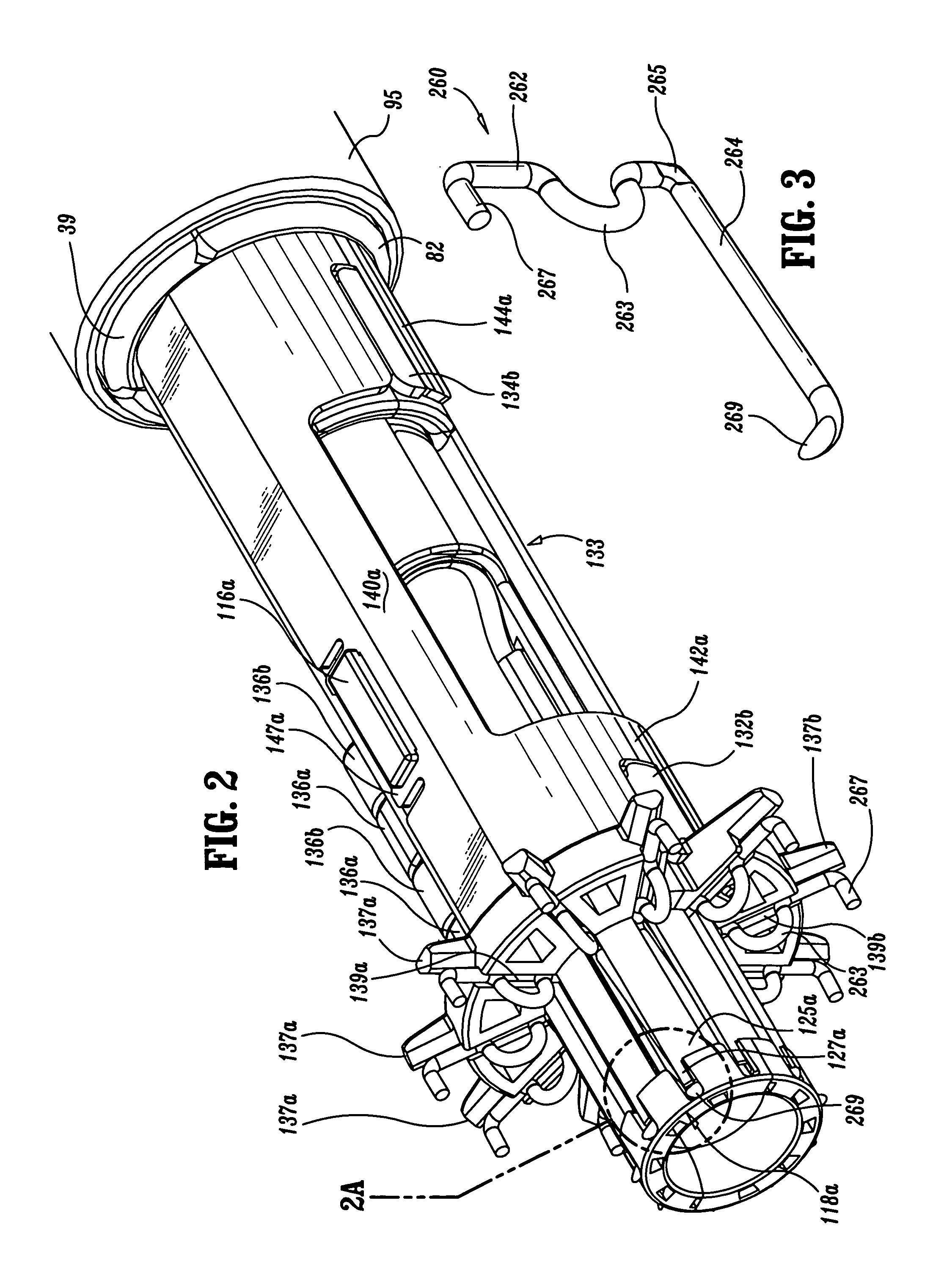Anastomosis instrument and method for performing same
an anastomosis and tubular body technology, applied in the field of anastomosis instruments and methods, can solve the problems of requiring a large recovery period, and patients with significant attendant risks, and achieve the effect of reducing the possibility of slippag
- Summary
- Abstract
- Description
- Claims
- Application Information
AI Technical Summary
Benefits of technology
Problems solved by technology
Method used
Image
Examples
Embodiment Construction
[0077]Preferred embodiments of the surgical instrument and method disclosed herein will be described in terms of a coronary artery bypass procedure wherein a vascular anastomosis is created by joining a section of a harvested vessel, e.g., the saphenous vein, to bypass an occlusion in a coronary artery, e.g., the left anterior descending artery (“LAD”). Alternatively, the presently disclosed surgical instrument may also be utilized in performing anastomosis of other tubular luminal body structures.
[0078]In the drawings and in the description which follows, the term “proximal”, as is traditional, will refer to the end of the apparatus which is closer to the user, while the term “distal” will refer to the end which is further from the user.
[0079]Referring now in detail to the drawing figures in which like reference numerals identify similar or identical elements, one embodiment of the present disclosure is illustrated generally in FIG. 1 and is designated therein as surgical instrumen...
PUM
 Login to View More
Login to View More Abstract
Description
Claims
Application Information
 Login to View More
Login to View More - R&D
- Intellectual Property
- Life Sciences
- Materials
- Tech Scout
- Unparalleled Data Quality
- Higher Quality Content
- 60% Fewer Hallucinations
Browse by: Latest US Patents, China's latest patents, Technical Efficacy Thesaurus, Application Domain, Technology Topic, Popular Technical Reports.
© 2025 PatSnap. All rights reserved.Legal|Privacy policy|Modern Slavery Act Transparency Statement|Sitemap|About US| Contact US: help@patsnap.com



